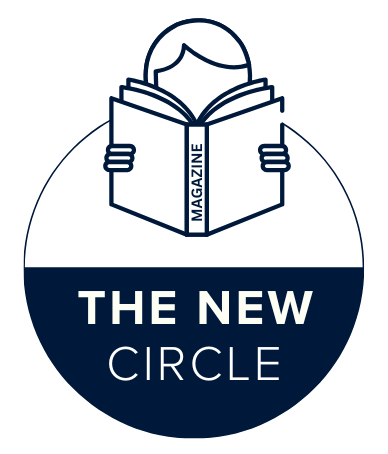Alright, let’s get real for a sec—AI video generation is kinda wild, right? You just type out whatever pops into your head, and, boom, out comes a video that matches your vibe. Feels like magic, until you start thinking: can these machines actually capture all those little storytelling quirks that make each culture unique? I mean, a Bollywood epic is a whole different beast from, say, a short, melancholic Japanese film, or those West African stories that are more like a party than a bedtime tale.
Storytelling isn’t some cookie-cutter thing you can slap a template on. Every culture’s got its own flavor—different rhythms, visuals, even a whole spectrum of feels. There’s the stripped-down Zen-ness of Japanese haiku-style tales, wild Indian mythologies with gods flying everywhere, Africa’s high-energy oral sagas, or those biting, darkly funny Eastern European dramas. The range is nuts. So, if these AI video toys wanna matter on a global scale, they’ve gotta do more than just spit out generic clips. They need to actually tune in and flex with all that cultural variety, not just nod and smile politely. Otherwise, what’s the point?
Understanding Cultural Storytelling Traditions
Alright, so here’s the deal: if AI wants to actually pull off adapting video content for different cultures, it can’t just slap on some subtitles and call it a day. It’s gotta dig into what makes a culture tick—like, the real bones of their stories. Every society’s got its own “secret sauce” in storytelling, you know? Western movies are obsessed with the ol’ three-act thing—build-up, drama explosion, neat little ending. But if you look at, say, Indigenous stories, you get these beautiful, meandering cycles—nature, spirits, life just rolling on instead of wrapping everything up in a tight bow. So yeah. AI needs to read the room, or in this case, the entire vibe of a culture, if it wants to do this right. Otherwise, it’s just gonna churn out some cringe, one-size-fits-nobody nonsense.
Prompt to video platforms that aim to serve global audiences must go beyond literal translation. They must interpret nuance, context, and culturally specific references. It’s not just about changing the language in the video; it’s about understanding why a story matters in a particular culture, and how it should be visually and emotionally represented.
Challenges of Cultural Context in AI Video Generation
Honestly, the big headache for AI when it comes to cultural storytelling? Context just goes right over its head. Most of these prompt-to-video tools are basically chugging from the firehose of internet data—which, let’s be real, is super Western-centric. So you end up with these weird, accidental mashups where Western story beats get slapped onto literally everything.
Like, imagine you toss a classic West African proverb into one of these platforms. You’re probably gonna get some bland, kinda off-putting animation that totally misses the point—the deeper meanings, the clever wordplay, the whole communal vibe? Gone. Or take a Middle Eastern folktale: suddenly the visuals look like something from a stock photo site, and the voiceover sounds like it’s trying to sell you insurance. Not exactly the stuff of legends.
The Role of Localization in AI Storytelling
Localization isn’t just slapping a new language on top of your content and calling it a day. Nah, it’s way deeper than that. We’re talking switching up the soundtrack, swapping out the visuals, even tweaking the vibe of the voiceover—so it actually feels right for whoever’s watching. Even the colors get a makeover. Basically, you gotta make it feel like home.
Now, with all this wild AI video tech popping up, stuff’s getting even spicier. You can feed a script into these prompt-to-video tools, and poof—suddenly you’ve got totally different versions for different corners of the world. Picture this: you drop one script in, and out comes an Indian version blasting Bollywood beats and neon colors, a Scandinavian cut that’s all chill, sleek, and moody, and then a Nigerian spin—super lively, full of community energy, with storytelling that actually feels like a celebration.
Community Involvement and Human Oversight
Honestly, if you want AI video tools to nail different storytelling vibes, you can’t just set it and forget it. You need actual people—like, real humans with cultural know-how—keeping an eye on things. Lately, folks using those prompt-to-video apps are pulling in cultural consultants, local artists, even people who just *get* the language, to make sure the results don’t fall flat or, worse, end up embarrassing.
Because, let’s be real, AI loves to copy the look of a thing but totally whiff on the actual heart of it. Having locals or people who actually care about the story jump in? That’s how you catch those awkward, tone-deaf moments before they go public. Fully automated systems still miss that stuff all the time. But hey, when you mash up these tools with some legit creative input from people on the ground, suddenly you’ve got a recipe for sharing stories that might’ve gotten lost in the noise online. It’s not just tech for tech’s sake—it’s actually helping keep culture alive. Who saw that coming?
AI as a Bridge, Not a Replacement
Look, let’s just say it straight: AI video isn’t here to shove real cultural stories out of the picture. It’s more like a funky shortcut or, I don’t know, a megaphone for people who’ve got something to say but zero budget for fancy cameras. These prompt-to-video sites? They’re like giving everyone a shot at movie magic, not just folks with Hollywood cash. But here’s the thing—real cultural flavor? That’s gotta come from the people living it, sweating it, making it messy and real.
Think about it: some kid in a tiny town, way off the grid, can turn their grandma’s wild ghost stories into a slick animation and blast it out to the whole planet. Or some student can take that weird legend from their village and make it pop on screen—no need for a film crew or piles of gear. That’s wild, right? So yeah, AI can crank the volume on those voices that usually get drowned out. But only if we don’t let it turn everything into bland, samey mush. Handle with care, basically.
The Future of Cultural Storytelling with AI
Honestly, AI video stuff is getting wild lately. Platforms aren’t just spitting out generic clips anymore—they’re actually starting to care about culture. You’ll see developers digging into data from all over the world, tossing in languages and vibes that actually make sense for different places. No more one-size-fits-all boringness.
Some of these sites? They let you pick a vibe for your story, like, “Hey, I want this to feel like an old-school folktale,” or maybe something grittier, like an “urban drama.” You can even mash those up with visuals from wherever you want—Tokyo, Lagos, you name it. It’s not just lip service to diversity anymore; they’re actually building it into the bones of these tools.
The coolest part? As more people get their hands on this tech, storytelling’s finally breaking away from that cookie-cutter, Hollywood-dominated nonsense. Instead of just seeing the same old stories pumped out by the usual suspects, we might actually get a wild mix of perspectives—people showing off their own styles, their own voices, all powered by AI. Feels like digital storytelling’s about to get a serious glow-up.
Conclusion
Look, AI video stuff could totally shake up how we tell stories across cultures—but only if the folks building it actually care about, you know, not being tone-deaf. These “prompt to video” things? They’re getting wild, way faster than anyone expected. But here’s the kicker: if they don’t get what makes each culture tick, they’re just gonna spit out bland, one-size-fits-all content. Nobody wants that. Mash up smart tech with real human creativity, though, and suddenly you’ve got something epic—a whole new playground for storytellers, where tradition and innovation actually vibe together. Now that’s a future I’d binge-watch.
YOU MAY ALSO LIKE: How AI Is Transforming Data Storage: Challenges and Innovations

